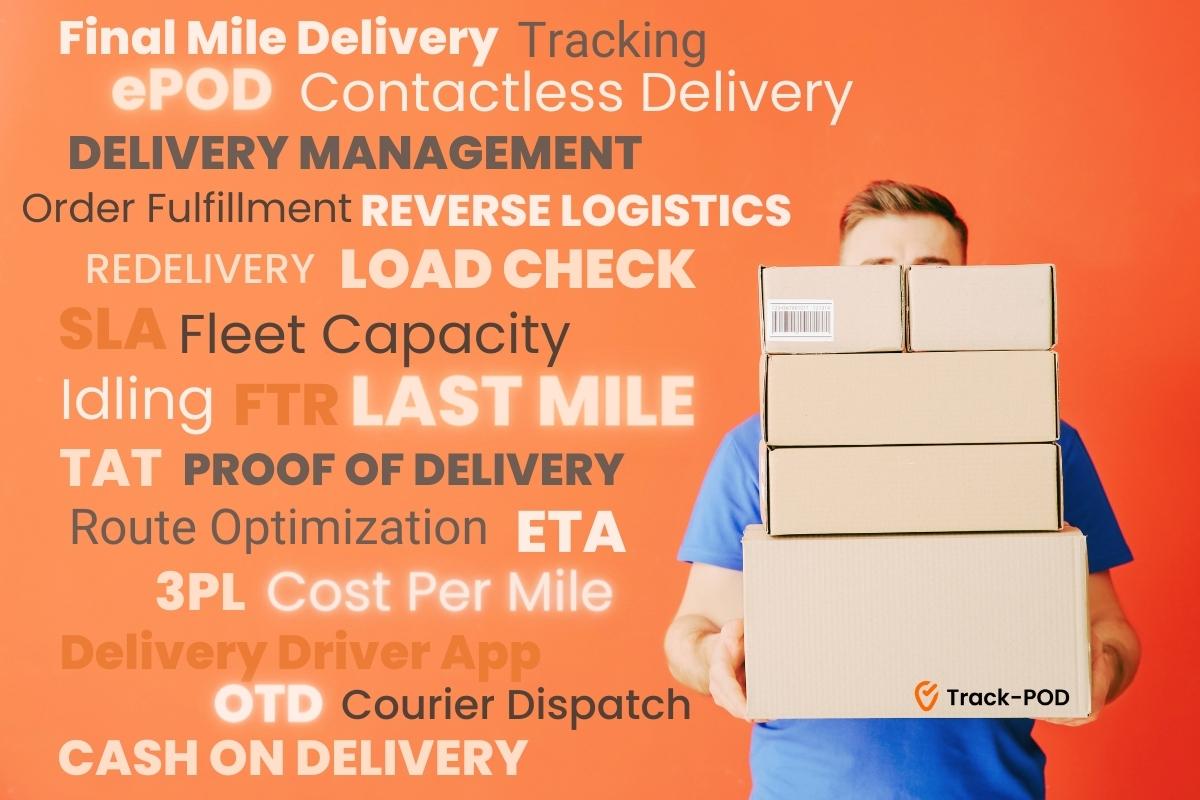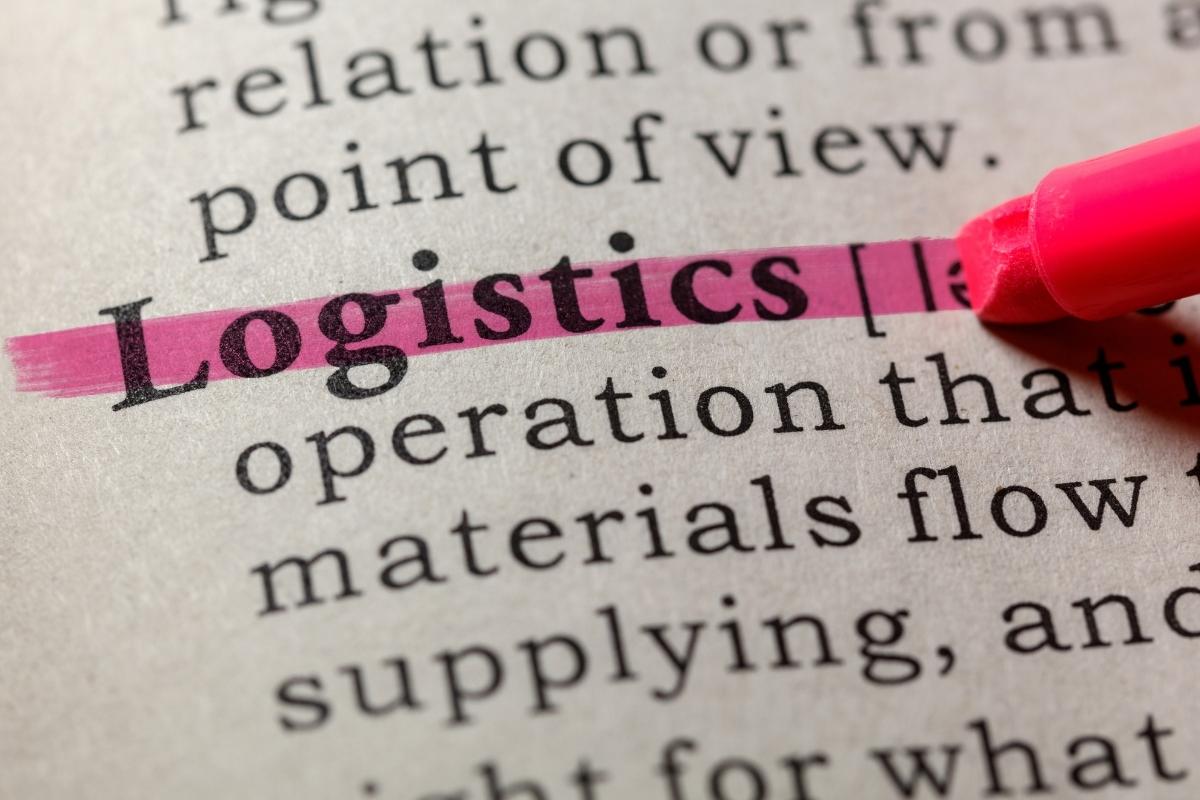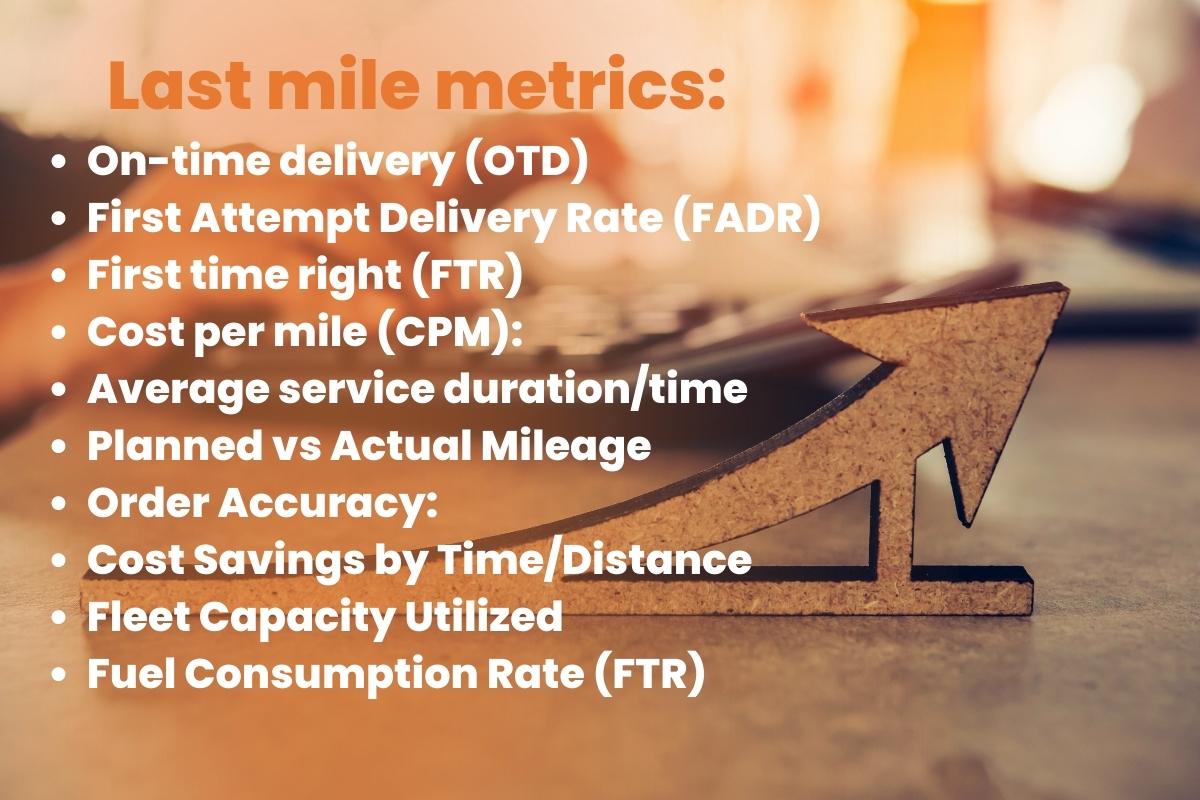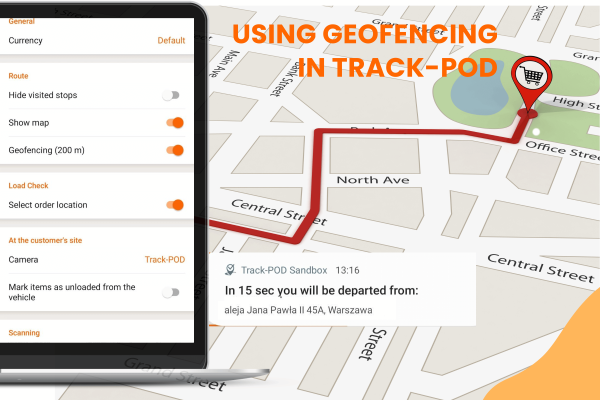Final Mile Logistics: Abbreviations, Terminology, and Delivery Metrics + Free Terms PDF

by
Alina Kostukova
July 20, 2023
Abbreviations and industry-specific terminology in last mile logistics can confuse beginners and even seasoned professionals.
This article interprets the alphabet soup of logistics terms and definitions to clarify the key concepts that drive final mile transportation.
We will define various terms used in the final mile industry, as well as the most critical delivery performance metrics.
Final mile logistics definitions
Let's start from the basics, break down the last mile industry's buzzwords, and explain what they really mean.
Last Mile Delivery (LMD) or Final Mile Delivery
The final leg of the delivery process where goods are transported from a transportation hub or fulfillment center to the customer's doorstep or preferred location.
Final Mile Logistics
The specialized logistics operations and strategies focused on the last mile delivery, such as optimizing delivery routes, managing inventory, and coordinating with local couriers or carriers.
Delivery Management System (DMS)
A first, middle, or final mile software solution that facilitates management and coordination of delivery operations, including order processing, route optimization, real-time tracking, and delivery documentation.
Third-Party Logistics (3PL)
3PL refers to the outsourcing of logistics and supply chain management activities to a specialized external service provider. A 3PL company acts as an intermediary between businesses and their customers.
Customer Experience (CX)
The overall impression and satisfaction that customers have during their interaction with the delivery service, including factors such as communication, timeliness, and professionalism.
Route Optimization or Route Planning
The process of building the most efficient delivery routes to minimize time, distance, and fuel consumption. The route optimization process often involves advanced algorithms and final mile software solutions.
Dynamic Route Optimization
Dynamic route optimization in last mile refers to the real-time adjustment of delivery routes based on changing factors such as traffic conditions, weather, and order additions or cancellations.
Static Route Optimization
Static route optimization in final mile delivery involves the pre-planning and optimization of delivery routes based on historical data, known traffic limitations, and set parameters.
Courier Dispatch
Courier dispatch refers to the process of assigning and dispatching couriers or delivery personnel to fulfill specific last mile delivery routes or orders. Final mile delivery management software is typically used for courier dispatch.
Tracking and Tracing
The ability to monitor and trace the progress of a delivery in real-time, providing customers with live updates and visibility into the location and estimated time of arrival of their package.
Delivery Window or Delivery Time Slot
A specific time frame during which the customer expects to receive their delivery, typically provided to them in advance for planning purposes.

Delivery Driver App
A driver app refers to a mobile application designed and used by last mile delivery drivers. Delivery driver app often comes as a part of final mile delivery software. It provides couriers with essential tools to manage their daily tasks effectively.
Driver apps typically offer features such as load and vehicle checks, GPS navigation, delivery tracking, communication with dispatchers, proof of delivery capture, barcode scanner, and access to relevant shipment details.
Proof of Delivery (POD)
Documentation or evidence in the final mile that confirms the successful delivery of a package. Final mile POD often comes in electronic format - ePOD. ePOD is obtained through e-signatures, photo proofs, geotags, or custom notes.
Reverse Logistics
The process of handling returns and managing the flow of products from the customer back to the retailer or manufacturer. Unlike the traditional forward logistics, which focuses on moving goods from the warehouse to the end customer, reverse logistics handles the movement of products in the opposite direction.
Load Check
Load check in final mile refers to the process of verifying and ensuring that the correct items or packages are loaded onto the delivery vehicle before it departs for its delivery route. It is a critical step in the last mile logistics operation to prevent delivery errors, misplaced packages, or missing items during transit.
Vehicle Check
Delivery vehicle inspection and verification process conducted before it departs on its assigned route. It involves assessing the vehicle's overall condition, including its mechanical components, safety features, and operational status.
Fleet Capacity
Fleet capacity in final mile operations refers to the total amount of transportation resources, including vehicles and couriers, that a company has available to fulfill customer orders.
Order Fulfillment
Order fulfillment in final mile refers to the comprehensive process of receiving, processing, and delivering customer orders from the final distribution center or warehouse to the intended recipients, typically within the local delivery area. It involves picking the items from inventory, packing them securely, and coordinating their delivery through efficient route planning and real-time tracking.
Redelivery
Delivery attempts that are made again in the event of a missing or failed delivery, a rejected order, or other circumstances. It occurs when the recipient was unavailable, the delivery address was incorrect or inaccessible.

Delivery types and terms
The last mile sector wouldn’t be able to operate without industry-specific vocabulary that guides customers, couriers, and delivery dispatchers in the order fulfillment process.
Contactless Delivery
A delivery method that minimizes direct contact between the delivery person and the recipient, often through practices like leaving packages at the doorstep, e-signatures, photo proofs.
Same-Day Delivery
A delivery service that guarantees the arrival of the package on the same day it was ordered, often catering to time-sensitive or urgent deliveries.
End of Day (EOD) Delivery
End of the day delivery refers to a specific timeframe for completing deliveries by the close of the business day.
Cash on Delivery (COD)
COD in final mile refers to a payment way in which the customer pays for the goods at the moment of delivery, often in cash.
Service Level Agreement (SLA)
In last mile delivery, a service level agreement (SLA) is a contractual agreement between a logistics service provider and a customer that describes the agreed-upon service levels and performance indicators (delivery TAT, order accuracy, returns, and exchanges).
Estimated Time of Arrival (ETA)
A calculated estimation of the anticipated time when a shipment, vehicle, or person is expected to reach a specific destination or location.
Last mile delivery metrics
Now, let’s discuss the most important final mile metrics that businesses use to evaluate the efficiency of their delivery services.

On-time Delivery (OTD)
Last mile metric that shows the total number of orders completed on time within a specific time frame.
Turnaround Time (TAT)
A delivery metric that refers to the duration or timeframe required to complete a delivery from when an order is placed or a shipment is ready for dispatch to when it reaches its ultimate customer.
First Attempt Delivery Rate (FADR)
Metric in final mile delivery that refers to the percentage of deliveries that are successfully completed on the initial delivery attempt, without requiring additional attempts or redelivery.
First Time Right (FTR)
Metric in last mile analytics that refers to the successful completion of a delivery on the first try, without any errors or issues that require redelivery.
Cost Per Mile (CPM)
Financial metric used in logistics and transportation to calculate the average cost incurred for each mile traveled by a vehicle or a fleet of vehicles.
Average Service Duration/Time
The average amount of time it takes to complete a delivery, from the time the courier arrives at the customer's address until the order is safely delivered and confirmed.
Planned vs Actual Mileage
A performance metric that keeps track of the difference between the distance that was planned for a delivery route and the distance that the delivery vehicle actually traveled while making the delivery.
Order Accuracy
Order Accuracy metric in final mile analytics refers to the measurement of the percentage of customer orders that are fulfilled correctly and accurately without any errors or discrepancies.
Cost Savings by Time/Distance
Metric in final mile that refers to the reduction in operational expenses achieved by optimizing delivery routes and minimizing the time and distance traveled during the last mile delivery process.
Fleet Capacity Utilized
Metric in last mile logistics that refers to the percentage or measurement of how effectively an organization utilizes its available fleet resources. It shows how much the fleet's vehicles and delivery staff are being used to their fullest potential to fulfill customer orders.
Fuel Consumption Rate (FTR)
A performance metric that measures vehicle fuel efficiency in miles per gallon (MPG) or liters per kilometer (L/km). This fuel efficiency statistic helps logistics businesses examine their transportation activities' environmental impact and operational expenses.

Final words
These definitions and terms cover the essentials of the last leg of the supply chain's journey and provide the groundwork for understanding all its complexities.
We hope this guide to logistics abbreviations and terms will help you in your day-to-day logistics operations.
About The Author
Alina Kostukova
Skilled marketing content creator with a background in digital media and public relations. Focused on creating first-rate text and visual content that stands out and tells compelling stories.








